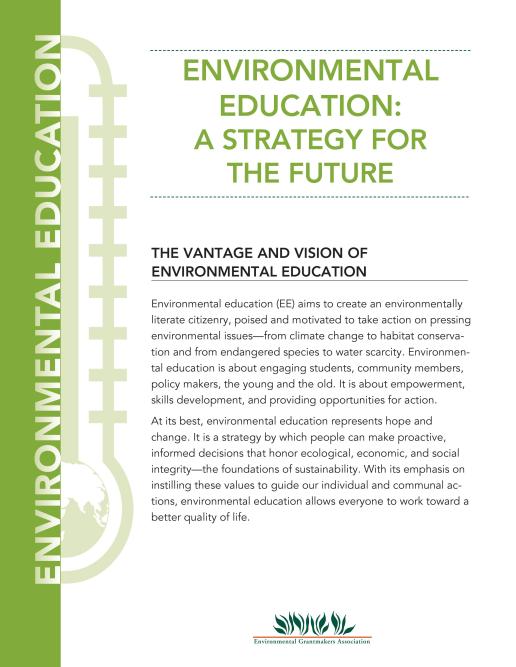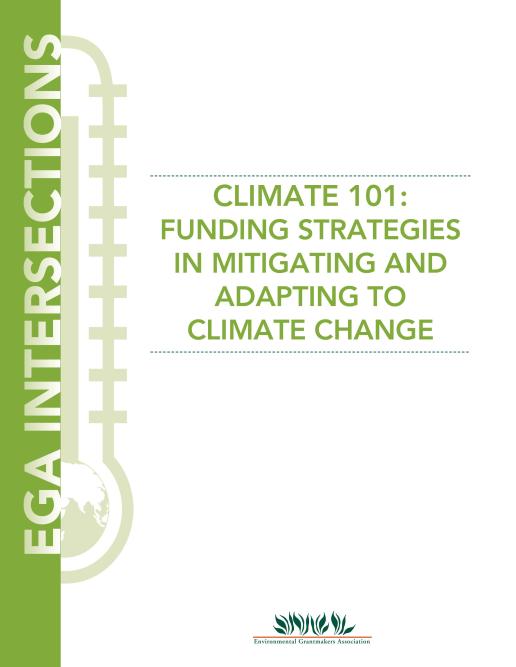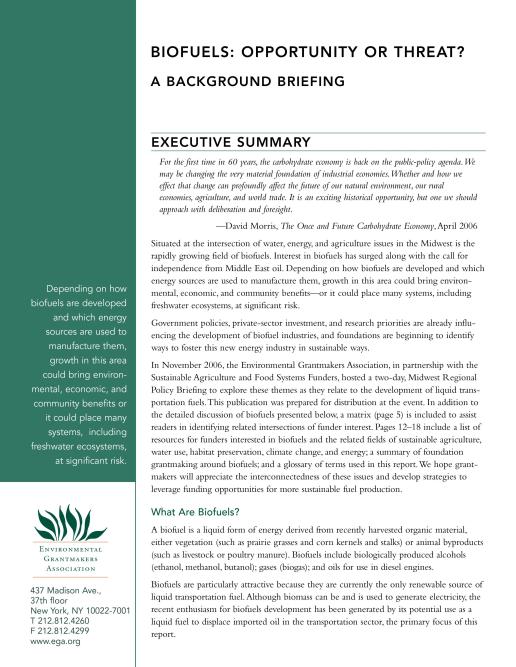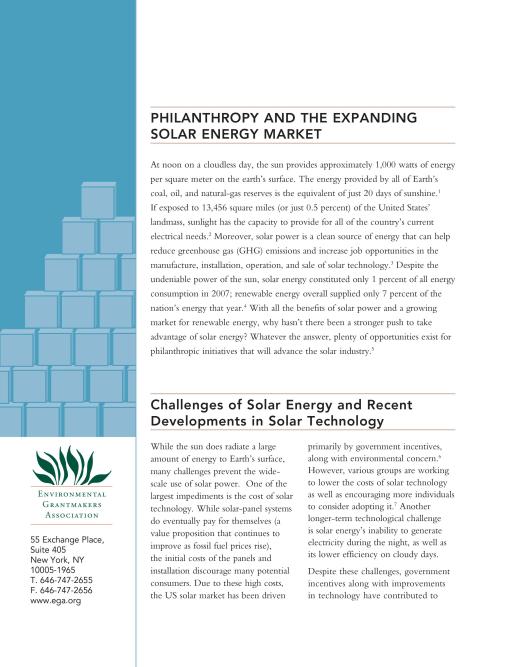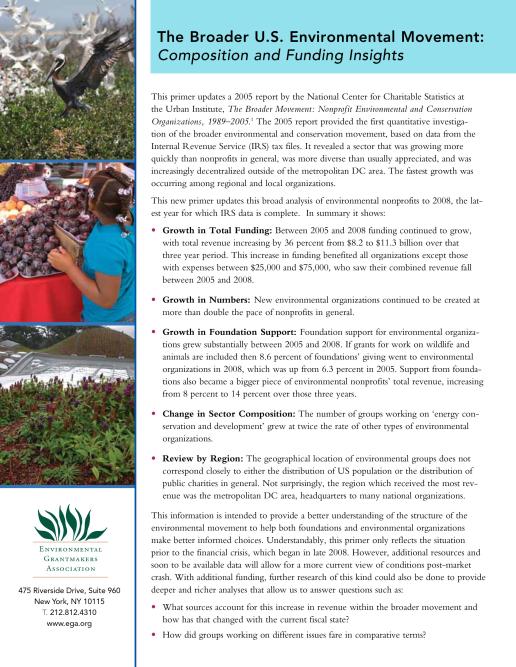EGA 25th Anniversary Journal
When EGA issued a call for submissions to this special anniversary Journal, we expected a handful of remembrances. Instead we received a plethora of thoughtful, entertaining, and provocative pieces from current and former members, those new to philanthropy and “old timers.” In these rich essays, you will learn some EGA history, consider how times have changed, and be challenged to take risks in a range of ways as to thinking about your grantmaking to ensure future generations have a sustainable planet to enjoy. While they’ve been divided into two sections—Reflections and Calls to Action—clearly most of them do both. Reflecting on where we’ve been, successes and failures, allows us to plan best for the most critical future. The EGA Board remains committed to the values that drove our founding members—nurturing and expanding environmental funding, a relaxed atmosphere to develop relationships and push each other to work more effectively together, and honoring all aspects of our natural world both urban and rural. We are grateful for your commitment to this work, and for this unique opportunity to look both back and ahead to push on in our efforts to help humanity course-correct for the planet.

